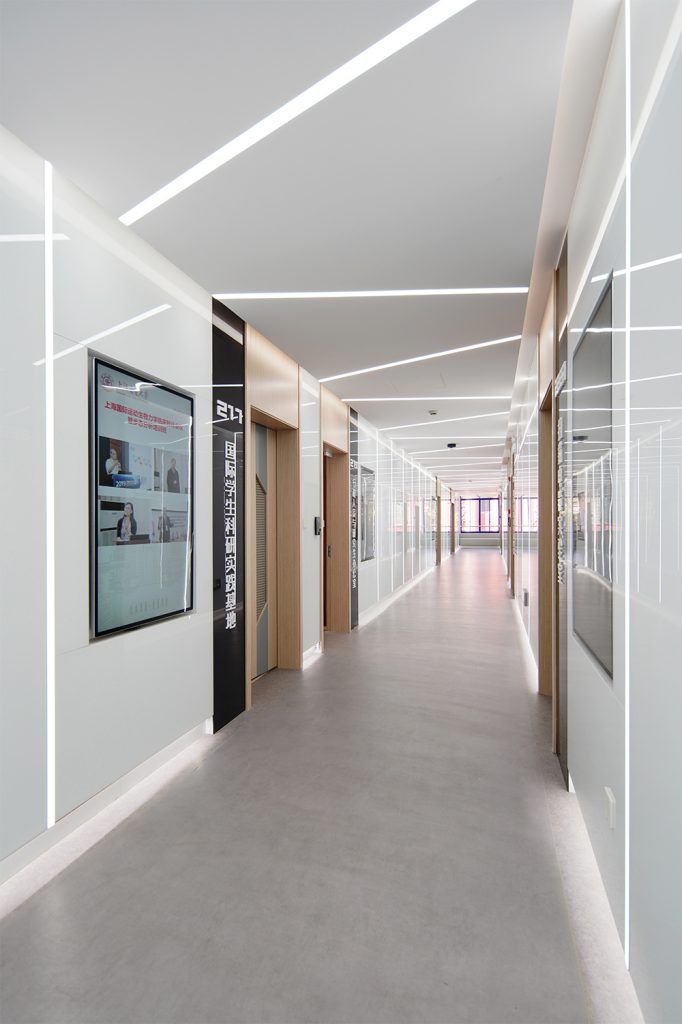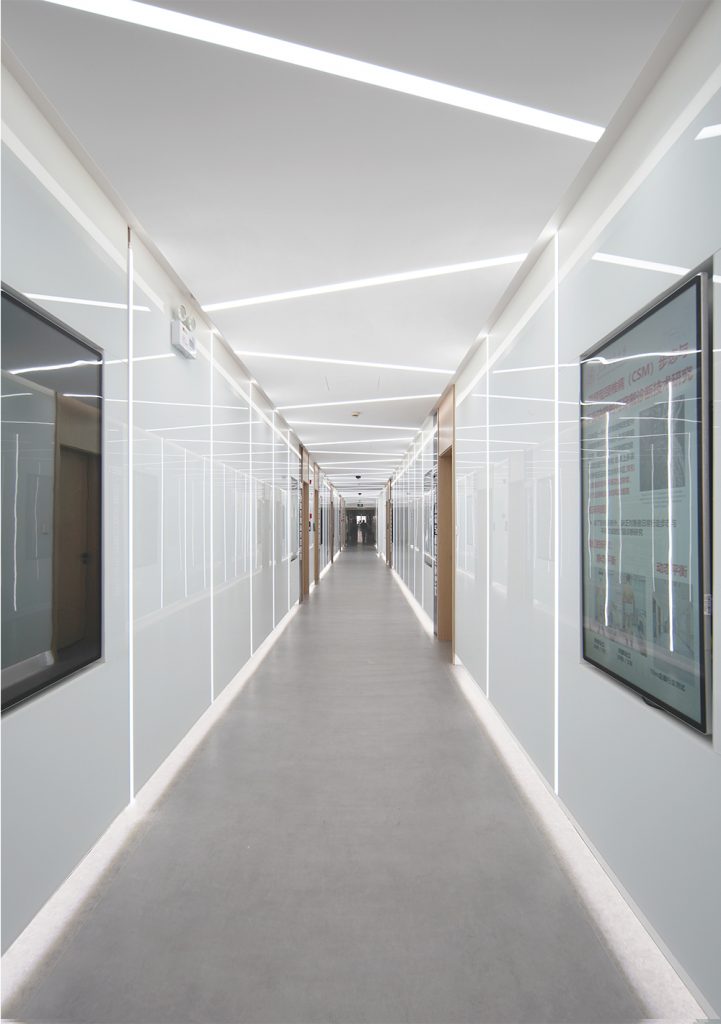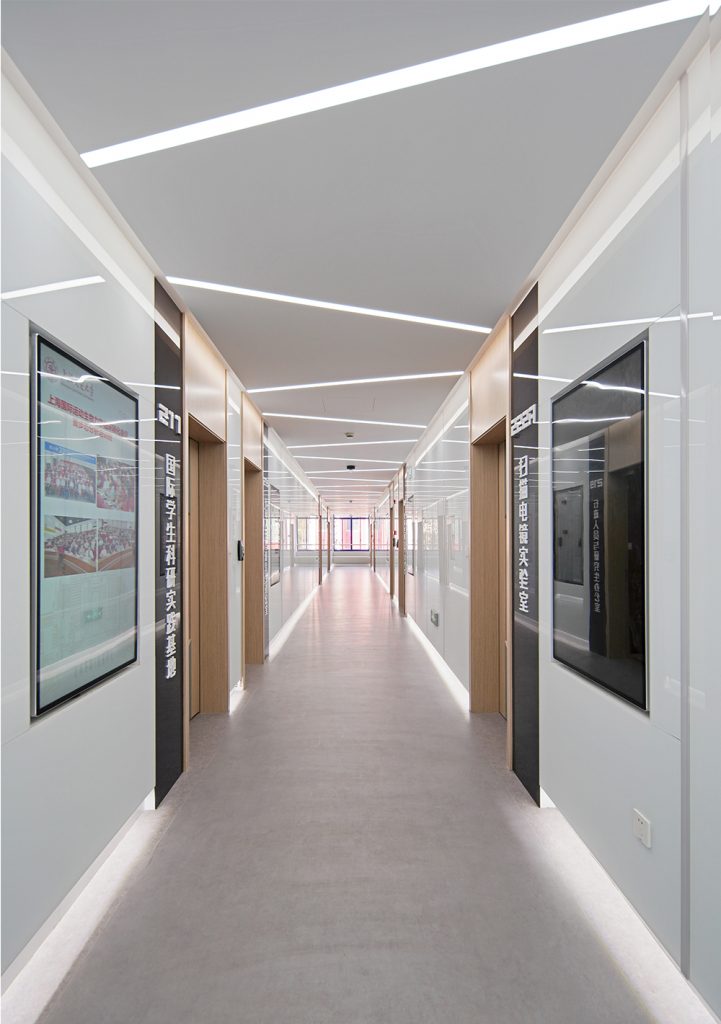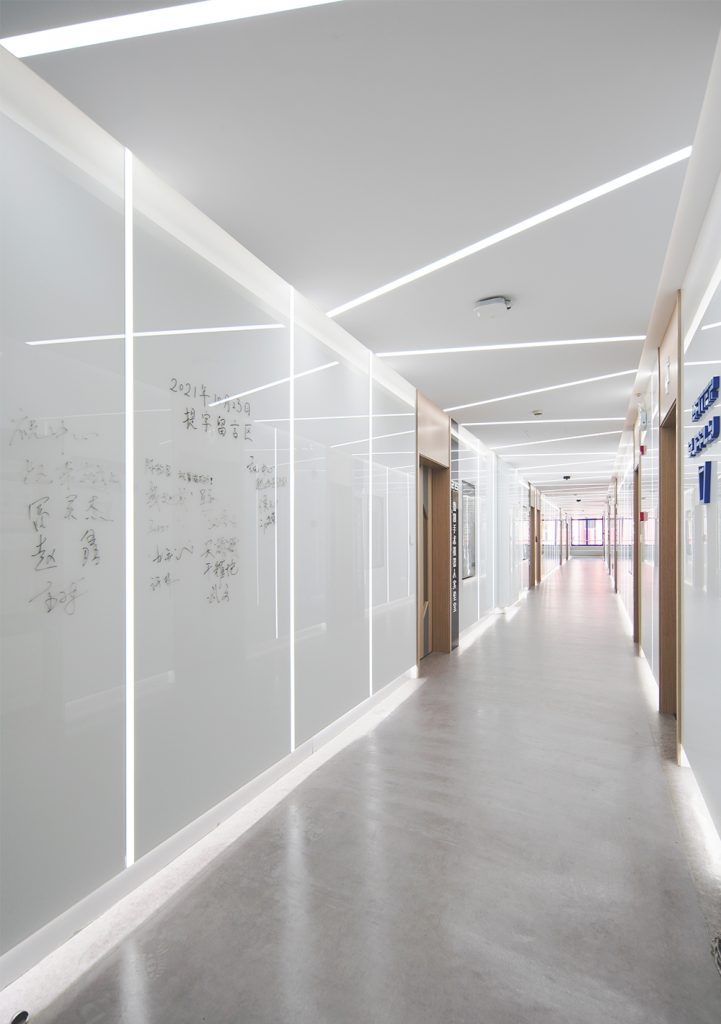
The SJTU Med-X Research Institute is China’s first engineering research center dedicated to innovative research and clinical transformation in the field of “digital medicine”. Its objective is to provide a platform for the development and integration of digital medicine into clinical practice. Located on the Xuhui campus, the institute benefits from a rich cultural history and has been a hub of cutting-edge technological advancements for a century. To enhance the research environment, the institute’s design sets an exemplary standard for transformation. It promotes interdisciplinary collaboration and provides an advanced research infrastructure to push the boundaries of digital medicine.

The Med-X Research Institute is leading the development of digital medicine through cutting-edge medical engineering research. To create a futuristic space that reflects our innovative approach, we have introduced the concept of a “future laboratory”. This space seamlessly integrates the scientific research atmosphere and cultural spirit of our institution, inspiring creativity and collaboration while pushing the boundaries of interdisciplinary research.

The design of the “future laboratory” utilizes lighting techniques and carefully placed lines to sculpt the space and create a sense of order. The use of ultra-white glass also adds a pure and bright quality to the space, enhancing its futuristic feel.

In the entrance design, linear lights and an indirect halo effect outline the high-tech image of digital medicine. The display screen showcasing leading digital research results becomes the most expressive facade, presenting the image of a future laboratory. Together, these design elements effectively convey the future technological sense of the space.
In addition to portraying the futuristic, technological feel of the “future laboratory” through lighting, we have also incorporated wood materials to infuse the space with a humanistic atmosphere.

The smooth surface of the lacquered ultra-white glass used in the corridor facade allows for posting written messages and other functions, adding to the practicality of the space. The oblique rhythm of the linear ceiling lamp serves to adjust the rigorous atmosphere of scientific research, imbuing the space with a lively character.

The departmental signage system uses dark gray glass baking paint and a technology-inspired font to create a distinctive aesthetic that makes it easy for visitors to identify the different research labs. Each lab is equipped with a display screen to showcase a variety of research results and the accomplishments of faculty and students, echoing the theme of digital research.

Over time, the academic atmosphere of the corridors has faded, and the 36-meter-long space with 5 types of non-uniform doors no longer meets the new presentation needs.

We sought to establish a new order by reorganizing the facade rhythm while maintaining the original door arrangement.

To maximize space and accommodate multiple functions, the research labs use a combination of movable and customized furniture. Various ceiling heights and lighting methods define each space’s function while maintaining flexibility. White tones and solid wood materials create a peaceful environment for lab workers.


Location:Xuhui District, Shanghai, China
Area:250㎡
Status: Construction Complete
Design Finish Year: 2021
Completion Year: 2021